How to calculate the filament temperature of a filament lamp in nominal mode
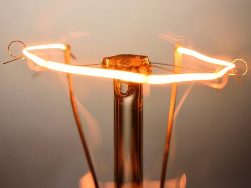 As you know, with increasing temperature of the metal, its electrical resistance increases. For various metals, in connection with this phenomenon, its own temperature coefficient of resistance α is characteristic, which can be easily found in the reference book.
As you know, with increasing temperature of the metal, its electrical resistance increases. For various metals, in connection with this phenomenon, its own temperature coefficient of resistance α is characteristic, which can be easily found in the reference book.
The reason for this phenomenon is that the thermal vibrations of the metal crystal lattice ions become more intense with increasing temperature, and the conduction electrons that form the current collide with them more often, spending more energy on these collisions. And since the current itself (according to the Joule-Lenz law) leads to heating of the conductor, then as soon as the current begins to flow through the conductor, the resistance of this conductor immediately begins to increase. Similarly, the resistance of the filament of the lamp increases when it is connected to a power source.Let's find the temperature of the filament in the nominal mode of its operation ...
What is the coefficient of performance (COP)
 The efficiency (abbreviated - Efficiency) of an electrical installation shows what proportion of active electrical energy Q, irrevocably consumed by this installation, is accounted for by the useful work A performed by this installation for its intended purpose (if we are talking about a converter or a consumer), or what proportion to the installation of mechanical energy (or energy of a different form, for example, chemical or light) is converted into useful energy (work) in it.
The efficiency (abbreviated - Efficiency) of an electrical installation shows what proportion of active electrical energy Q, irrevocably consumed by this installation, is accounted for by the useful work A performed by this installation for its intended purpose (if we are talking about a converter or a consumer), or what proportion to the installation of mechanical energy (or energy of a different form, for example, chemical or light) is converted into useful energy (work) in it.
Thus, the efficiency is a dimensionless quantity, the value of which is always less than unity, and can be written in the form of a decimal fraction, or in the form of a number (the number of percentages) - from 0% to 100%. Electric heaters, in which the energy of electric current is converted directly to heat, have the highest efficiency (close to 100%). In practice, this is the so-called Joule heat, which is released according to the Joule-Lenz law ...
Calculation, selection and connection scheme of the controller for RGB-tape
 RGB tapes are designed to create adjustable backlighting. Using the controller, you can set the hue, brightness of the glow of the LED strip or choose a program for dynamic color change. Let's talk about how to choose an RGB controller and how to connect it.
RGB tapes are designed to create adjustable backlighting. Using the controller, you can set the hue, brightness of the glow of the LED strip or choose a program for dynamic color change. Let's talk about how to choose an RGB controller and how to connect it.
Multi-color LED strips consist of SMD 5050 type LEDs in the housing of which there are three crystals, each of which glows in a specific color. As a result, each LED can emit an almost unlimited number of shades. There are RGB-tapes, which consist of single-color LEDs of other types, for example, SMD 3528 or others. In them, each LED shines in one color. Their use and controllers for them are essentially no different from the previous view.Power is connected via 4 wires(3 colors and general plus). You can connect each of the colors directly ...
How to calculate and choose a power supply for a 12V LED strip
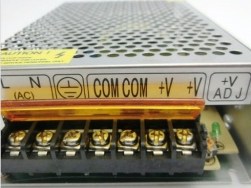 LED strip allows you to organize lighting and lighting. When using models with 220V power, a small adapter with a diode bridge inside is needed to connect. But to connect low-voltage LED strips to 12V or 24V, you need a power supply. And for multi-color models, there is also a controller. We will talk about how to choose and calculate the power supply for the LED strip in current and power in this article.
LED strip allows you to organize lighting and lighting. When using models with 220V power, a small adapter with a diode bridge inside is needed to connect. But to connect low-voltage LED strips to 12V or 24V, you need a power supply. And for multi-color models, there is also a controller. We will talk about how to choose and calculate the power supply for the LED strip in current and power in this article.
All of the following is true both for the common 12V LED strip, and for models with a 5V or 24 volt supply voltage. Before proceeding to the calculation of the power supply for the LED strip, you need to decide where it will be installed, it depends on which option to pay attention to.According to the cooling method, two types of power supplies are distinguished: with active cooling and with passive cooling. Active cooling consists of radiators and a fan ...
How to protect wiring from overload and short circuit
 The main task of an electrician is to make wiring reliable and safe. Accidents may result in fire or electric shock. Accidents occur due to increased current and short circuits. As a result, too much current flows through the conductors, they heat up and insulation melts on them, sparking or an arc occurs. In this article I will talk about how to protect wiring from overload and short circuit.
The main task of an electrician is to make wiring reliable and safe. Accidents may result in fire or electric shock. Accidents occur due to increased current and short circuits. As a result, too much current flows through the conductors, they heat up and insulation melts on them, sparking or an arc occurs. In this article I will talk about how to protect wiring from overload and short circuit.
To understand the danger of high current flowing through wires, one needs to recall two important laws of physics from the course “electricity and magnetism”. The first is Ohm's law: The current in the circuit is directly proportional to voltage and inversely proportional to resistance. This means that if the circuit has low resistance, the current will be large, and if large, then small, and also with increasing voltage, the current increases with it. This seems obvious, but newcomers often have a question ...
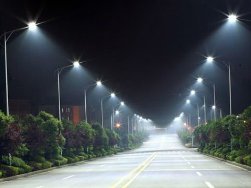 Very sophisticated, capacious, often quite powerful lighting systems are always needed to illuminate streets and industrial premises. In connection with the data, which has already become a traditional state of affairs, a logical question arises: is it possible to make these systems less energy-intensive, more economical, and so that at the same time they would remain sufficiently durable.
Very sophisticated, capacious, often quite powerful lighting systems are always needed to illuminate streets and industrial premises. In connection with the data, which has already become a traditional state of affairs, a logical question arises: is it possible to make these systems less energy-intensive, more economical, and so that at the same time they would remain sufficiently durable.
The answer to this question is logical: yes, this is possible if the transition to more modern, more advanced and economical light sources is ensured. It is already clear (based on at least 15 years of experience) that these new light sources have a very high working resource, and their optical characteristics are preserved for at least 10 years. We are talking about LED light sources. Until recently, a variety of discharge lamps have traditionally been used everywhere for street and industrial lighting ...
The practical application of lasers
 The invention of the laser can rightfully be considered one of the most significant discoveries of the 20th century. Even at the very beginning of the development of this technology, they already prophesied a completely versatile applicability, from the very beginning the prospect of solving a variety of problems was visible, despite the fact that some tasks were not even visible on the horizon at that time.
The invention of the laser can rightfully be considered one of the most significant discoveries of the 20th century. Even at the very beginning of the development of this technology, they already prophesied a completely versatile applicability, from the very beginning the prospect of solving a variety of problems was visible, despite the fact that some tasks were not even visible on the horizon at that time.
Medicine and astronautics, thermonuclear fusion and the latest weapons systems - these are just some of the areas in which the laser is successfully used today. Let's see where the laser found its application, and see the greatness of this wonderful invention, which owes its appearance to a number of scientists. Monochromatic laser radiation can be obtained in principle with any wavelength, both in the form of a continuous wave of a certain frequency and in the form of short pulses, lasting up to fractions of a femtosecond. Focusing on the test sample ...
Network grid-tie inverters for solar panels
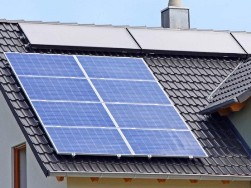 In those areas where it is problematic or impractical to connect to a centralized power grid, especially in solar regions, people often resort to using solar panels in their private farms. Solar panels convert the energy of solar radiation into electricity, and thus allow the consumer to receive electricity for their own needs, regardless of the state power grid.
In those areas where it is problematic or impractical to connect to a centralized power grid, especially in solar regions, people often resort to using solar panels in their private farms. Solar panels convert the energy of solar radiation into electricity, and thus allow the consumer to receive electricity for their own needs, regardless of the state power grid.
But due to the fact that the generation of electricity on solar panels is uneven (at different times of the day, as well as depending on cloud cover and current climatic conditions), the person has to accumulate the received energy all the time in high-capacity batteries. Such batteries are expensive, and their life is limited. Lead batteries will work in such a system for about 5 years, and lithium batteries for about 10 years, but they also cost 5 times more expensive than lead ones ...
How to make an electromagnet at home
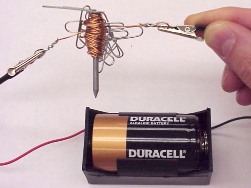 Electromagnets and solenoids are often used to move some kind of mechanisms, and in factories for lifting loads. The design of this device is easy to repeat and in essence is nothing but a core and a coil of conductor. In this article we will answer the question of how to make an electromagnet with your own hands?
Electromagnets and solenoids are often used to move some kind of mechanisms, and in factories for lifting loads. The design of this device is easy to repeat and in essence is nothing but a core and a coil of conductor. In this article we will answer the question of how to make an electromagnet with your own hands?
Recall the course of school physics, namely that when an electric current flows through a conductor, a magnetic field arises. If the conductor is rolled into a coil, the lines of magnetic induction of all the turns are formed, and the resulting magnetic field will be stronger than for a single conductor. The magnetic field generated by an electric current, in principle, has no significant differences compared with a magnetic one. The traction force of an electromagnet depends on magnetic induction.It follows that the force with which a magnet attracts something depends on the current strength, the number of turns and the magnetic permeability of the medium ...
How to protect the apartment from overvoltage
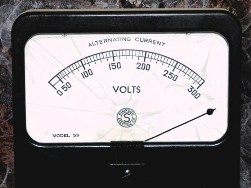 Light bulbs burn out from power surges, household appliances fail, and even an emergency situation in apartment wiring can occur. Increased voltage is observed during phase imbalance and other problems on the line. Let's figure out how you can protect the electrical equipment of an apartment from overvoltage.
Light bulbs burn out from power surges, household appliances fail, and even an emergency situation in apartment wiring can occur. Increased voltage is observed during phase imbalance and other problems on the line. Let's figure out how you can protect the electrical equipment of an apartment from overvoltage.
So, for what reasons is the excess voltage in the network? Phase imbalance, surge voltage or so-called voltage surges and fluctuations caused by the difference in load at different times of the day or season. It is worth noting that GOST 29322-2014 says: “the supply voltage should not differ from the rated voltage of the system by more than ± 10%”, which for 220V lies in the range 198-242V. The phase imbalance occurs as a result of the complete burning off of the zero conductor at the entrance to the house, apartment or from the transformer substation, or a strong deterioration of its contact ...
What are memristors and where are they applicable?
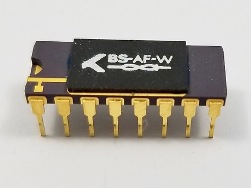 The name "memristor" comes from two words - memory and resistor. This microelectronic component is a kind of passive component, a resistor, but unlike a conventional resistor, a memristor has a kind of memory. The bottom line is that the memristor changes its conductivity in accordance with the amount of electric charge flowing through it - depending on the value of the integral over time passing through the current component. A memristor can be described as a two-terminal with a nonlinear CVC, and with a certain hysteresis.
The name "memristor" comes from two words - memory and resistor. This microelectronic component is a kind of passive component, a resistor, but unlike a conventional resistor, a memristor has a kind of memory. The bottom line is that the memristor changes its conductivity in accordance with the amount of electric charge flowing through it - depending on the value of the integral over time passing through the current component. A memristor can be described as a two-terminal with a nonlinear CVC, and with a certain hysteresis.
In the early 70s, the American professor Leon Chua proposed a theoretical model, which described the relationship between the voltage applied to the element and the current integral over time. For many years, the theory of Professor Chua remained a theory, and only in 2008Hewlett-Packard team of scientists, led by Stanley Williams, created in the laboratory a sample of a memory element...
 Judging by the abundance of videos and comments on them on YouTube, the topic of the so-called "Free Energy" has already snapped many and continues to excite the minds. Which is not surprising, because the desire to learn new things is quite natural for an intelligent person. However, not every person, having first seen something unusual and new, is able to correctly interpret what he saw. For this reason, many immediately begin to stigmatize inventors, innovators, calling them deceivers, charlatans, scammers. But is it worth judging so clearly? Let's think about it.
Judging by the abundance of videos and comments on them on YouTube, the topic of the so-called "Free Energy" has already snapped many and continues to excite the minds. Which is not surprising, because the desire to learn new things is quite natural for an intelligent person. However, not every person, having first seen something unusual and new, is able to correctly interpret what he saw. For this reason, many immediately begin to stigmatize inventors, innovators, calling them deceivers, charlatans, scammers. But is it worth judging so clearly? Let's think about it.
The first law of thermodynamics tells us that energy cannot be created or destroyed, it can only transfer from one species to another. This means that if the Free Energy devices, in the form in which they are presented on YouTube, are real, then they simply transform the energy of some unusual sources ...
